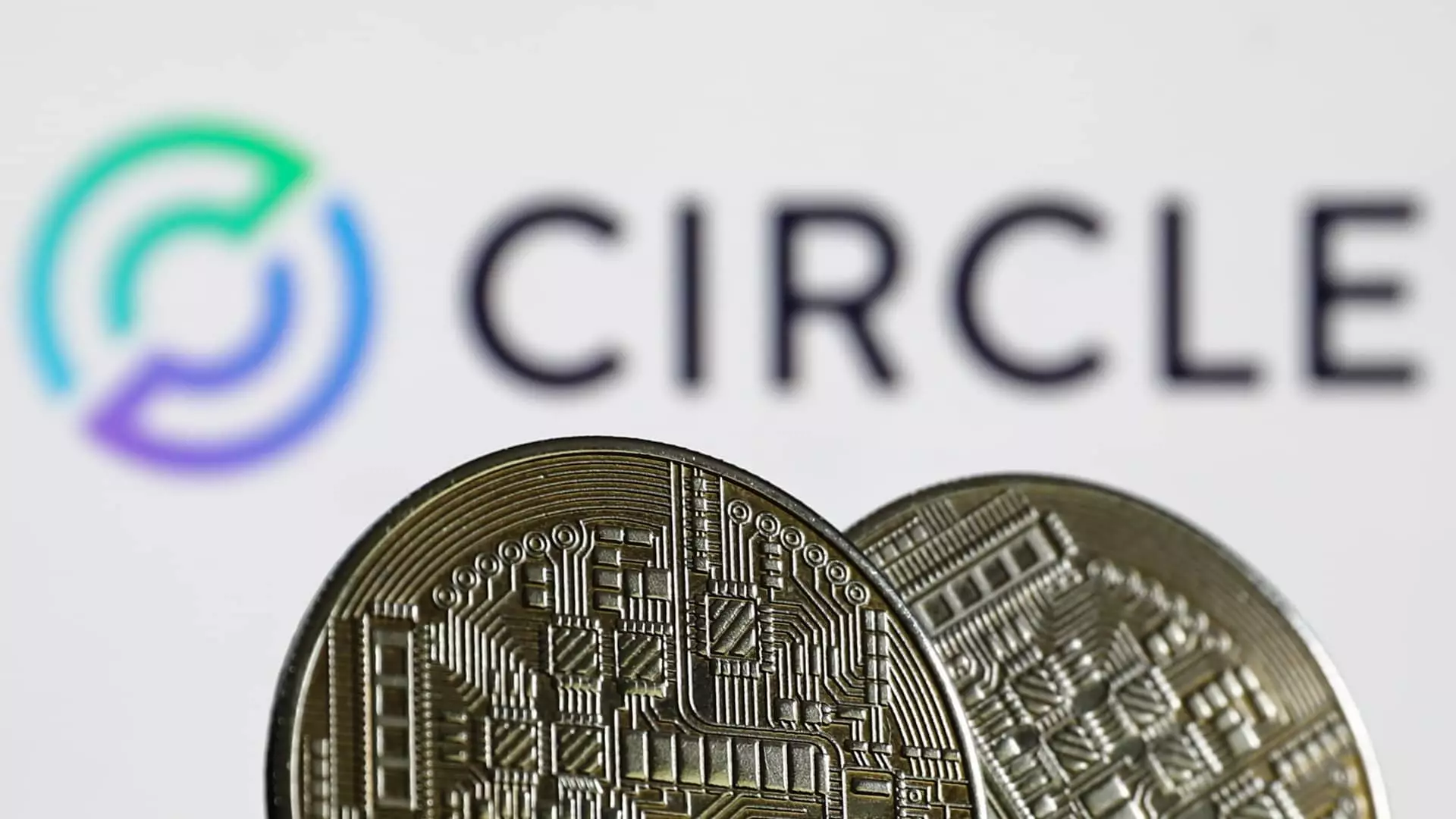The financial world often finds itself on the cusp of innovation and volatility, particularly in the realm of cryptocurrencies. Circle, the brainchild behind the USDC stablecoin, is gearing up to take a massive leap into the public arena with an initial public offering (IPO) that aims to raise around $624 million, thrusting it toward a staggering valuation of approximately $6 billion. This moment is pivotal—not just for Circle itself but for the entire cryptocurrency ecosystem, as it stands as a testament to how far the industry has come and the challenges that still loom ahead.
Circle’s ambitions reflect a growing confidence in the cryptocurrency sector, buoyed by the recent advancements toward regulatory frameworks that promise to shape the future of stablecoins. The movement towards legitimizing digital currencies is gaining momentum, and with any substantial market player like Circle stepping into the limelight, the ripple effects could be monumental. The question remains: Can Circle navigate these treacherous waters successfully, or will this IPO serve as a cautionary tale for other crypto enterprises eager to leap into the public eye?
An IPO Fuelled by Strong Backing
Circle’s IPO ambitions are further emboldened by significant backing from respected investors, notably Cathie Wood’s ARK Investment Management, which has expressed interest in acquiring up to $150 million of the shares being offered. This indicates a burgeoning faith in Circle’s model and prospects, showcasing the growing intersection between traditional investment philosophies and the disruptive nature of cryptocurrencies. Yet, a sense of skepticism remains; do mainstream investors really understand the underlying dynamics of a stablecoin like USDC, or are they merely seduced by the allure of quick gains?
As Circle plans to list its shares on the New York Stock Exchange under the ticker CRCL, it ties itself ever closer to the traditional financial system it claims to disrupt. There lies a dichotomy: while Circle’s ethos is rooted in providing a more open financial system, the act of appealing to the stringent measures of Wall Street feels contradictory to the founding principles of decentralization and innovation.
Competition and Dominance in the Stablecoin Space
In the ever-evolving landscape of stablecoins, USDC holds a substantial market share, accounting for roughly 27% of the total stablecoin market cap. This is a considerable achievement, especially when one considers Tether’s overwhelming dominance of 67%. However, while USDC’s market cap has seen impressive growth of 40% this year, this statistic masks underlying tensions that could hinder long-term success. Circle may be pacing ahead, but will it be able to maintain this trajectory in the face of competition?
The real test for stablecoins is to provide genuine utility beyond merely trading and collateral in decentralized finance (DeFi). Institutions and investors are paying close attention to the usage of these currencies, keen to glean insights into market demand and liquidity. Significantly, USDC’s capabilities to facilitate faster and cheaper dollar transactions across borders have garnered interest from banks and fintech companies. This evolution from a speculative asset to a functional tool capable of promoting operational efficiency is both innovative and crucial for the ongoing vitality of the cryptocurrency landscape.
The Regulatory Framework: The Game-Changer
Undoubtedly, Circle’s timing coincides with a pivotal moment in regulatory discussions surrounding stablecoins, specifically as initial legislation begins to make its way through the Senate. The anticipation surrounding potential regulation creates a dichotomy: on one hand, it offers a framework that can solidify the legitimacy of digital currencies; on the other, it risks stifling the very innovation that made these technologies appealing in the first place.
As former President Donald Trump has expressed a desire for crypto regulation to hit his desk by August, Chaos and regulatory certainty coexist in a fragile balance. Circle stands to gain significantly from a strong legislative framework, smoothing over concerns for investors wary of regulatory backlash. However, the fine line between safeguarding investors and restricting innovation will be crucial not only for Circle but for the long-term viability of the crypto market as a whole.
Circle’s path toward becoming a publicly-traded entity encapsulates a broader narrative of transformation within the financial landscape—a tale steeped in uncertainty, challenges, and immense potential. As it navigates this complex engagement with traditional finance and burgeoning regulation, Circle might not only find success for itself but also reframe the very paradigm of how cryptocurrencies are perceived and utilized globally.

